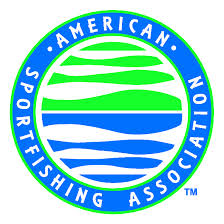Article courtesy of asafishing.org | December 16, 2014 – please click here for original article.
Recreational fishing’s future is advanced in several key areas
Each year, there are any number of federal and state policy discussions and decisions that impact the sportfishing industry with 2014 being no exception. With many challenges and opportunities still facing the industry, the American Sportfishing Association (ASA) noted six key initiatives or issues that will continue to resonate in 2015 and beyond.
“One of ASA’s most important functions is advocating for our members, and for the broader recreational fishing community, when issues arise that have the potential to enhance or undermine the sportfishing industry’s prospects in the years ahead,” said ASA President and CEO Mike Nussman. “Recreational fishing’s issues can almost always be grouped under three fundamental topics – clean waters, abundant fish and access to both. We saw significant progress in each of these areas in 2014, although our work is far from over.”
“By providing anglers with a voice when important issues arise that impact recreational fishing,KeepAmericaFishing, ASA’s angler advocacy arm, played an active role in these significant achievements, as well as many others,” said KeepAmericaFishing Director Liz Ogilvie. “KeepAmericaFishing is one of the most powerful tools the sportfishing industry has to ensure a vibrant future.”
A Landmark Vision for Saltwater Recreational Fishing
Congress is currently revising the Magnuson-Stevens Fisheries Conservation and Management Act (Magnuson-Stevens Act), the law that governs our nation’s marine resources.
In early 2014, the Commission on Saltwater Recreational Fisheries Management, co-chaired by Bass Pro Shops founder and CEO John Morris and Maverick Boats President Scott Deal, released “A Vision for Managing America’s Saltwater Recreational Fisheries.” This landmark report identifies six key policies that would conserve marine fishing resources while producing the full range of saltwater recreational fishing’s economic, social and conservation benefits.
The commission’s priorities are supported by members of Congress and are included in draft Magnuson-Stevens reauthorization bills. In addition, NOAA Fisheries committed to achieving the Commission’s first recommendation, to develop a national recreational fishing policy, which is expected to be released in early 2015.
Maine and the Outcry Over Banning Soft Lures
Thanks in large part to stiff opposition from anglers and industry, Maine decided not to ban soft plastic lures in 2014. Maine’s Department of Inland Fisheries and Wildlife studied the issue and concluded that a ban on soft plastic lures wasn’t warranted which was adopted by the state’s legislature.
Despite this significant achievement, it is anticipated that legislative proposals to restrict or ban soft plastic lures will reemerge in 2015.
In 2015, ASA is preparing to engage with the Maine legislature to stop any bills from moving forward that would unnecessarily restrict anglers’ ability to fish with soft plastic lures. KeepAmericaFishing is launching a proactive campaign to educate anglers on proper disposal of unused or unwanted soft plastic lures.
The Pacific Marine Monument
Last September, President Obama signed a proclamation expanding the existing Pacific Remote Islands Marine National Monument to six times its current size, creating the largest marine reserve in the world.
Although the proclamation bans commercial fishing, deep-sea mining and other commercial extraction methods, recreational fishing is allowed. Acknowledging that recreational fishing is a sustainable use of a public resource, especially in one as pristine as this area of the Pacific, is a distinction for which the recreational fishing community has been advocating for many years.
Our Atlantic Striped Bass Fishery
In a move overwhelmingly supported by the recreational fishing industry, the Atlantic States Marine Fisheries Commission approved implementing a 25 percent striped bass harvest reduction for coastal states for both the commercial and recreational fishing sectors within one year. The Chesapeake Bay jurisdictions’ reduction percentage is set at 20.5 percent.
ASA and KeepAmericaFishing strongly advocated for this harvest reduction. The reduction will help to safeguard this very popular and economically important fishery from overfishing which could trigger drastic restrictions on recreational fishing.
Congress Steps Up to Protect Traditional Fishing Tackle
A provision to prohibit federal funds from being used to regulate lead fishing tackle and ammunition under the Toxic Substance Control Act was included in the end-of-year omnibus federal spending bill. On multiple occasions, the Environmental Protection Agency (EPA) has been petitioned by anti-fishing organizations to federally ban fishing tackle containing lead based on its impact on wildlife, a position that is not based on sound science.
While the EPA has consistently rejected these petitions, ASA has advocated for a permanent fix to prevent an unnecessary ban from being approved. The temporary legislative fix provided in the federal spending bill supports and reinforces the EPA’s previous decisions and will aid ASA in its efforts toward a permanent solution, possibly through inclusion in a Sportsmen’s Package bill in the 114th Congress.
A Renewed Effort to Reestablish Access at Cape Hatteras
Legislation to restore reasonable public access to the Cape Hatteras National Seashore Recreational Area in North Carolina, one of the premier surf fishing locations in the United States, has passed the Senate and is expected to be signed into law.
Off-road vehicle (ORV) access to the seashore is essential for surf fishing from the beaches, as well as for many other recreational activities. In December 2010, the National Park Service approved an ORV management plan that closed extensive areas of the seashore to the public and severely limited ORV access to provide protections for shorebirds and other wildlife.
The legislation requires the Secretary of the Interior to review and modify the final ORV rule, taking into account several important factors to better accommodate public access.
Nussman concluded, “None of these accomplishments would have been possible without the collective efforts of our members and the numerous partner organizations with whom we work. As we look ahead to 2015 and beyond, our industry must continue to strengthen existing partnerships and build new ones to be able to address the increasing number of legislative and policy issues that will impact American’s ability to get our on the water and enjoy a day’s fishing.”






